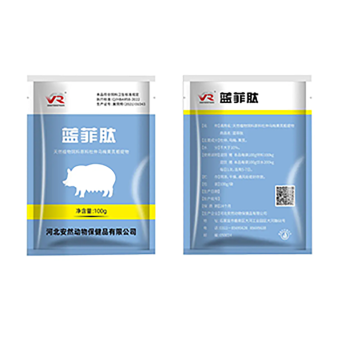- Afrikaans
- Albanian
- Amharic
- Arabic
- Armenian
- Azerbaijani
- Basque
- Belarusian
- Bengali
- Bosnian
- Bulgarian
- Catalan
- Cebuano
- Corsican
- Croatian
- Czech
- Danish
- Dutch
- English
- Esperanto
- Estonian
- Finnish
- French
- Frisian
- Galician
- Georgian
- German
- Greek
- Gujarati
- Haitian Creole
- hausa
- hawaiian
- Hebrew
- Hindi
- Miao
- Hungarian
- Icelandic
- igbo
- Indonesian
- irish
- Italian
- Japanese
- Javanese
- Kannada
- kazakh
- Khmer
- Rwandese
- Korean
- Kurdish
- Kyrgyz
- Lao
- Latin
- Latvian
- Lithuanian
- Luxembourgish
- Macedonian
- Malgashi
- Malay
- Malayalam
- Maltese
- Maori
- Marathi
- Mongolian
- Myanmar
- Nepali
- Norwegian
- Norwegian
- Occitan
- Pashto
- Persian
- Polish
- Portuguese
- Punjabi
- Romanian
- Russian
- Samoan
- Scottish Gaelic
- Serbian
- Sesotho
- Shona
- Sindhi
- Sinhala
- Slovak
- Slovenian
- Somali
- Spanish
- Sundanese
- Swahili
- Swedish
- Tagalog
- Tajik
- Tamil
- Tatar
- Telugu
- Thai
- Turkish
- Turkmen
- Ukrainian
- Urdu
- Uighur
- Uzbek
- Vietnamese
- Welsh
- Bantu
- Yiddish
- Yoruba
- Zulu
Dic . 10, 2024 07:54 Back to list
disinfectants used in veterinary clinics
Disinfectants Used in Veterinary Clinics Ensuring Health and Safety for Animals
In veterinary clinics, maintaining a clean and sterile environment is crucial for the health and well-being of animals. Disinfectants play a vital role in preventing the spread of infectious diseases, ensuring a safe space for both patients and staff. This article explores the types of disinfectants used in veterinary settings, their importance, and best practices for effective use.
Types of Disinfectants
Veterinary clinics commonly utilize several types of disinfectants, each formulated to tackle a variety of pathogens, including bacteria, viruses, and fungi. Some of the most widely used disinfectants include
1. Quaternary Ammonium Compounds (Quats) Known for their effectiveness against a broad spectrum of microorganisms, quats are frequently used in veterinary clinics. They are often used on surfaces, instruments, and even as a wipe for animal handling areas. However, they may not be effective against certain pathogens like parvovirus and should be used in conjunction with other disinfectants.
2. Chlorine Compounds Sodium hypochlorite, commonly known as bleach, is a powerful disinfectant effective against a wide range of pathogens, including viruses that cause gastrointestinal diseases in animals. However, it must be used carefully, as it can be corrosive to surfaces and irritating to skin and respiratory systems.
3. Alcohols Isopropyl alcohol and ethyl alcohol are frequently used for disinfecting small items and surfaces. They are effective against bacteria and viruses when used at concentrations of 60%-90%. However, they do not penetrate organic matter well, making thorough cleaning essential before application.
4. Phenolic Compounds These disinfectants are effective against a variety of pathogens and are particularly useful in environments where viral infections are a concern. They are typically used for hard surfaces and can withstand organic matter, making them a reliable choice in busy veterinary clinics.
5. Hydrogen Peroxide This powerful oxidizer is utilized for its broad antiviral and antibacterial properties. Sometimes used in conjunction with other agents, hydrogen peroxide can be particularly effective in cleaning contaminated areas.
disinfectants used in veterinary clinics

Importance of Disinfectants in Veterinary Practice
The use of disinfectants in veterinary clinics is not just a recommendation; it is a necessity. Infections can easily spread among animals, particularly in multi-patient environments where vulnerable animals are present. Disinfectants help to
- Prevent Cross-Contamination By regularly disinfecting surfaces and instruments, clinics can reduce the risk of transmitting infections from one animal to another. - Enhance Recovery A clean environment supports the recovery of ill animals by lowering their risk of acquiring hospital-acquired infections. - Protect Staff Veterinary staff are exposed to various pathogens in their line of work. A sanitized environment reduces the likelihood of transmission and protects the well-being of both staff and animals.
Best Practices for Use
To maximize the effectiveness of disinfectants, veterinary clinics should adhere to several best practices
1. Thorough Cleaning Before Disinfection Surfaces must be cleaned to remove organic matter, as this can impede the disinfectant's action. 2. Follow Manufacturer Guidelines Each disinfectant has specific recommended concentrations, contact times, and methods of application. Following these guidelines ensures effective results. 3. Regular Training Staff should receive regular training on the proper use of disinfectants, including safe handling and potential hazards. 4. Rotation of Disinfectants To prevent the development of resistant strains of pathogens, it is advisable to rotate different disinfectant types.
Conclusion
Disinfectants are an essential tool in veterinary clinics, vital for protecting the health of animals and ensuring a safe environment. By understanding the various types of disinfectants available and adhering to best practices, veterinary professionals can significantly reduce the risk of infection and create a healthier space for both animals and staff. In the ever-evolving field of veterinary medicine, the commitment to cleanliness and safety remains paramount.
-
Guide to Oxytetracycline Injection
NewsMar.27,2025
-
Guide to Colistin Sulphate
NewsMar.27,2025
-
Gentamicin Sulfate: Uses, Price, And Key Information
NewsMar.27,2025
-
Enrofloxacin Injection: Uses, Price, And Supplier Information
NewsMar.27,2025
-
Dexamethasone Sodium Phosphate Injection: Uses, Price, And Key Information
NewsMar.27,2025
-
Albendazole Tablet: Uses, Dosage, Cost, And Key Information
NewsMar.27,2025













